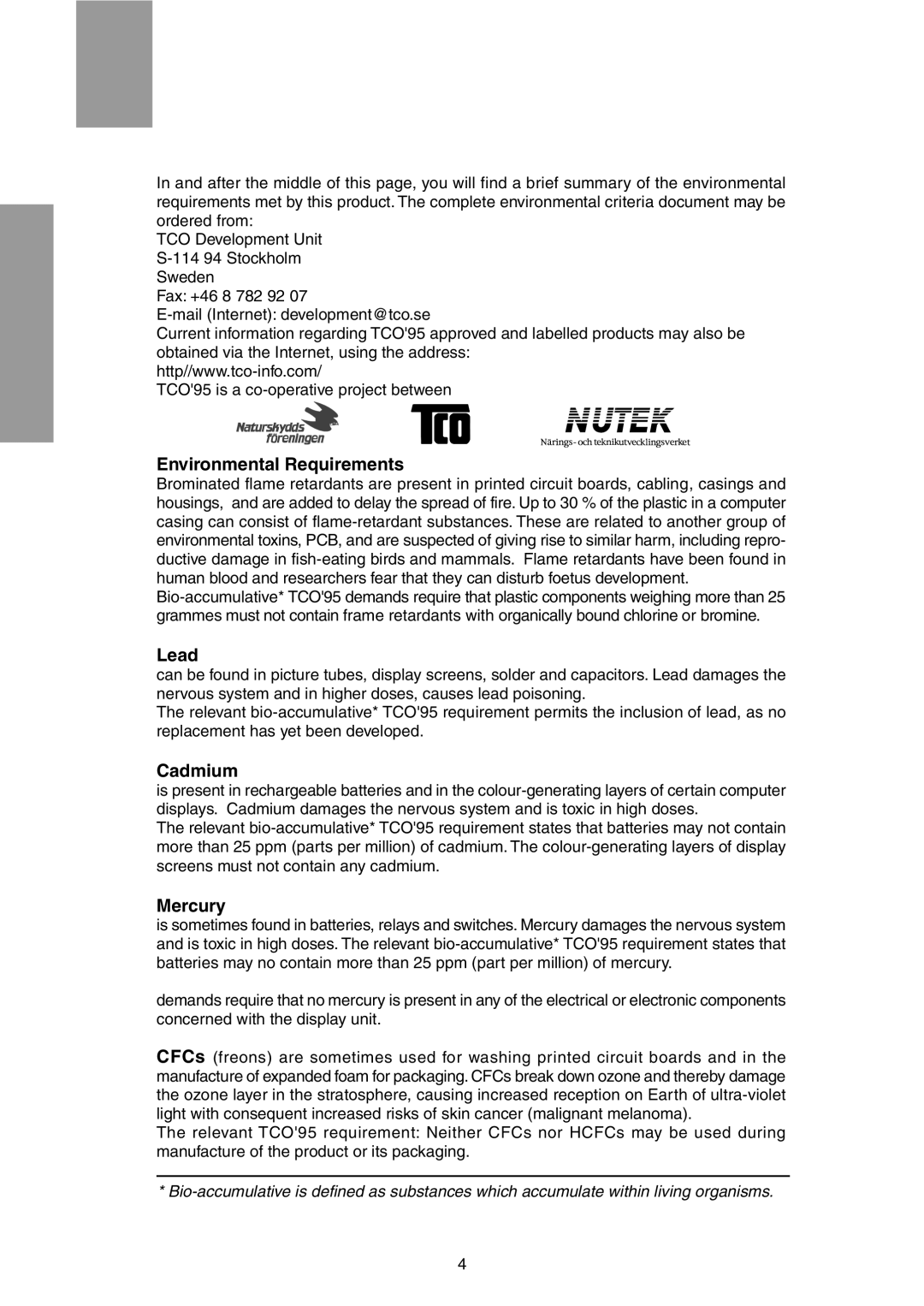
In and after the middle of this page, you will find a brief summary of the environmental requirements met by this product. The complete environmental criteria document may be ordered from:
TCO Development Unit
Fax: +46 8 782 92 07
Current information regarding TCO'95 approved and labelled products may also be obtained via the Internet, using the address:
TCO'95 is a
Environmental Requirements
Brominated flame retardants are present in printed circuit boards, cabling, casings and housings, and are added to delay the spread of fire. Up to 30 % of the plastic in a computer casing can consist of
Lead
can be found in picture tubes, display screens, solder and capacitors. Lead damages the nervous system and in higher doses, causes lead poisoning.
The relevant
Cadmium
is present in rechargeable batteries and in the
The relevant
Mercury
is sometimes found in batteries, relays and switches. Mercury damages the nervous system and is toxic in high doses. The relevant
demands require that no mercury is present in any of the electrical or electronic components concerned with the display unit.
CFCs (freons) are sometimes used for washing printed circuit boards and in the manufacture of expanded foam for packaging. CFCs break down ozone and thereby damage the ozone layer in the stratosphere, causing increased reception on Earth of
The relevant TCO'95 requirement: Neither CFCs nor HCFCs may be used during manufacture of the product or its packaging.
*
4
